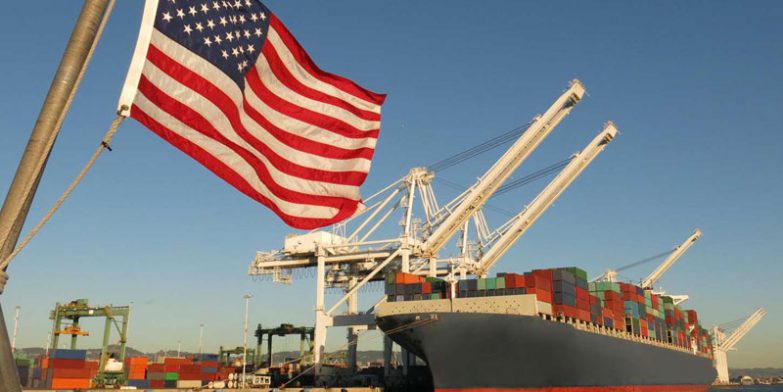
Despite talk of deglobalization, near-shoring and global economic tensions sea-borne imports into the United States continue to grow, increasing by more than a quarter on pre-COVID 2019.
With the trade press full of stories about businesses de-coupling from China, supply chain de-risking and near-shoring, you would be forgiven for thinking that trade is faltering in 2024.
However, goods continue to come in from overseas, with data shared by FreightWaves confirming that bookings for containerised imports into the US are up 27% versus 2019 and 11% over last year.
US import growth actually began to accelerate in Q4 2023, growing 4% in October, 5% in November, 10% in December, 11% in January, 32% in February and 24% in March, with the Port of LA’s Q1 2024 volumes up 30% and east coast volumes up 17% through Savannah.
While restocking may be a primary reasons for the growth in import traffic, this year’s volumes are also being driven by shipper concern over container-ship capacity being tied up in longer transits around the Cape of Good Hope, as carriers divert away from the Suez Canal to avoid the conflict in the Middle East.
The diversion around southern Africa does not have a direct influence on North American import lanes from Asia, but it does impact global capacity as a whole, because more capacity is needed on Asia to Europe lanes, which may mean moving ships from other services, including transpacific.
Sea freight spot rates began to climb on the heels of the growing conflict around the Suez Canal and pre-Lunar New Year demand before slowly sliding and then rising again, remaining well above pre-pandemic norms.
The surging cargo demand and soaring freight rates have encouraged many carriers to relaunch transpacific services, 18 months after they withdrew, with some of the biggest carriers also launching new services between Asia and the Americas to take advantage of the buoyant market, with US retailers upgrading import forecasts through September.
SeaLead, Taiwan’s TS Lines and China’s BAL Container Line are intra-Asia carriers returning to the transpacific trade, with Cosco, Wan Hai, Maersk and MSC also launching new Asia-Americas services.
Regardless of the new capacity, global average schedule reliability is hovering just above 50% and there are equipment shortages at many origins, which means shippers find themselves once again dealing with uncertainty in rates and services, which is encouraging many to bring forward orders, to offset anticipated longer lead times.
In this year’s sea freight booking data there is a noticeable absence of seasonal demand softening in April that was present both in 2019 and last year, with bookings falling 15% from early April to mid-May in 2023, but just 5% this year.
Peak season for import demand is typically July and August, but if shippers have been bringing sufficient orders forward the peak season may be muted. Alternatively, if the peak season does follow its traditional trajectory, volumes will go through the roof!
Which is essentially going to send us back to back to an extremely uncertain environment that we thought we had left behind us.
Domestic transportation has also been affected, with rail volumes up 16% and backlogs mounting on the west coast. Los Angeles’ outbound truckload tender volumes are up 35%, helping push tender rejection rates to their highest levels since 2022, with spot rates rising 7% over the past month and 21% since March.
In challenging times Global Forwarding USA leverage long-term ocean carrier relationships and $Billion buying-power to deliver cost-effective, resilient and reliable solutions, that optimise every supply chain.
If you have concerns or questions regarding any of the issues highlighted here, we can provide insights, advice and guidance. EMAIL Adam Davies, Global Forwarding USA, Vice President.





